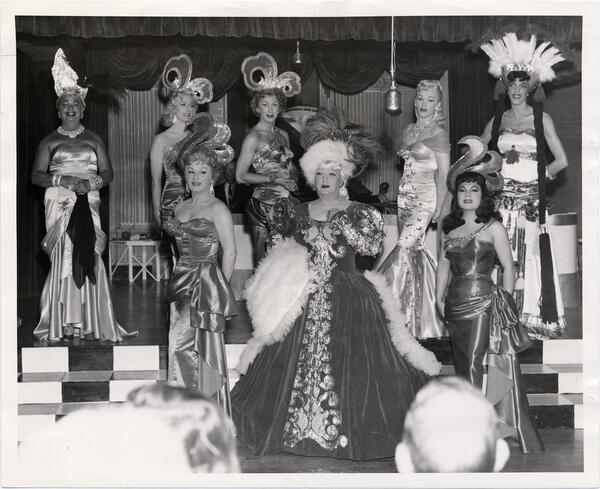Most everyone thinks of the Castro as the San Francisco gayborhood, where you can traverse rainbow-colored crosswalks to drink at Moby Dick’s and dine at the Sausage Factory before taking in a film at the Castro Theatre.
Yet decades before Harvey Milk took office and the rainbow flag was hoisted at the intersection of Castro and Market streets, another queer neighborhood thrived: North Beach.
That’s the history Shawn Sprockett wants to shed light on with his new walking excursion through the traditionally Italian neighborhood.
Sprockett’s “Unspeakable Vice” tour, which borrows its name from the code word for homosexuality in Victorian times, is the result of years of research by Sprockett—who scraped beneath the surface in city archives to piece together a little-known history. Typically, Sprockett offers the tour monthly, though he’s upping the frequency of the walks during Pride Month.
“We break the story [of gay history] down into these three simple parts: The Stonewall riots, and then Harvey Milk, and then gay marriage passed, and everything was happily ever after,” Sprockett said. “We skip over these decades of really important people, usually people of color, usually women, and we don't get a chance to really talk about them.”
Here’s your chance to learn more. You can sign up for the next “Unspeakable Vice” on Sprockett’s website—in the meantime, here are some highlights.
José Sarria
The initial spark that led Sprockett to research LGBTQ+ history in North Beach came when he learned that a famous drag queen lived on his street—all the way back in the 1950s.
José Sarria, nicknamed "the Nightingale of Montgomery,” went to drown his sorrows at the Black Cat Café after being arrested on morals charges at the St. Regis Hotel—and went on to win second place in a drag competition. Arguably the first gay bar in San Francisco, the long-closed watering hole next to today’s Maison Nico was a bohemian hangout: Truman Capote allegedly quipped, “I’m a drinker with a writing problem,” there, and it makes a cameo in Jack Kerouac’s On the Road.
When Sarria made a bid for the Board of Supervisors in 1961, he was the first openly gay man to run for public office in the country—more than a decade before Harvey Milk.
“His platform in 1961 was ‘Gay is good,’ which is just remarkable courage and really ahead of his time,” Sprockett said. “His story is just not told enough. [...] No one’s talking about this amazing Latinx hero that’s part of our story.”
Sarria called himself “Empress Norton,” identifying as the fictional widow of the famed San Francisco eccentric Emperor Norton—and Sarria is, in fact, buried next to the Emperor in Colma.
Mona Sargeant
North Beach’s Broadway boasted some seven lesbian bars in a matter of blocks in the 1940s—today, there are only a few dozen in the entire country—and the proliferation was in part because of a bar owner named Mona Sargeant.
Mona’s, which eventually became Mona’s 440 Club, was arguably the very first lesbian bar in the U.S. when it opened in 1936 with the tagline “where girls will be boys.” Women performers dressed in tuxedos—including Gladys Bentley of Harlem Renaissance fame who fearlessly broke all the gender norms of her time—in an establishment that catered to the gay community directly instead of to gay tourism.
Sargeant, who was a straight, married woman, created havens for lesbian and transgender people throughout North Beach, all against the backdrop of World War II.
Finnochio’s
The cisgender woman owner of Finnochio’s played games with the audience that would be highly controversial today, like guessing which performers were women versus dressed as women.
“They thought of themselves like illusionists, and it's all about the accuracy of how realistically they can transform into a female character,” Sprockett said. “Whereas drag performers today, it's much more of a performance art.”
The nightlife hot spot catered to straight couples and celebrities from Judy Garland to Bette Davis and Marlene Dietrich to Bette Midler all hung out at Finnochio’s.
“What a drag,” poet Lawrence Ferlinghetti said when it closed.
